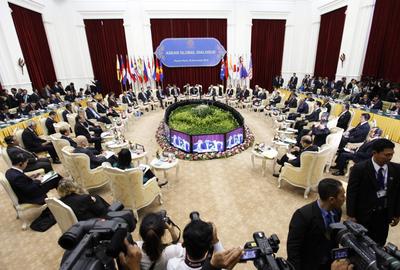An outcome that does not go much further on agriculture and secure commercially meaningful access in key markets for Australian services providers and investors would be a difficult economic and political sell. Australia’s Trade and Investment Minister, Andrew Robb, says the talks are well advanced but that the race will be won or lost right at the end.
As the negotiations approach the end-game, negotiators will have to push extremely hard to ensure that countries’ offers improve sufficiently in these and other areas and to protect its interests in new disciplines, such as intellectual property. Or they will need to opt out, in their own national interests. While so-called ‘fast track’ authority has not been granted in the United States, negotiators would be mad to reach an in-principle deal and be left open to US congressional blackmail. There’s pressure enough with partners to these negotiations keeping US political face, pressure which in the end could deliver a very bad deal.
Asia’s economic success story is one of integration into the international economy. All the major Asian economies are fundamentally natural resource deficient so trade has been the key to their industrial and economic transformation. This interdependence and the framework within which it is managed is critical to Asia’s political security not only its economic security. To put it bluntly, getting the right framework for international economic security will save a lot of spending on ships and guns. The scale of Asia’s economic growth and the geographic proximity of Asian economies have dictated that inevitably more and more of the trade of Asian economies has been with each other. Commitment to opening up to trade under the GATT and WTO and the establishment of policy regimes that welcomed foreign investment in turn provided a policy environment in which Asian economic integration — promoted not by discriminatory trading arrangements but by the multilateral rules and norms — provided confidence and security in their international economic dependence. It was these non-discriminatory trade policies in recent decades that led the way in pioneering international production networks and supply chains as a dynamic element in efficient international trade and economic growth.
Right across Asia governments are facing the need to re-boot their economies, from positions of varying degrees of strength. China is challenged with rebalancing and deeper reform including liberalisation of capital markets and international payments to maintain its new growth trajectory. Structural reform and a new round on international opening is essential to the success of Japan’s new growth strategy. India has to embrace its internationally-oriented reform strategy anew if it is to avoid slipping back into economic stagnation and poverty. Indonesia needs to retreat from renewed protectionism to maintain and lift its growth momentum.
China and Indonesia are not part of the TPP negotiations. The outcome of TPP will be judged importantly by its success in describing a passage towards their participation that is fair and transparent, not subject to arbitrary veto by individual parties. China and other non-members of TPP are absolutely integral parts of Asian supply chains which are driving economic integration and growth in East Asia and globally. It is through these supply chains that the newer emerging economies in Southeast Asia and South Asia can join the globalisation process.
On another front, a fourth round is scheduled among the officials of the 16 East Asian nations comprising the membership of the Regional Comprehensive Economic Partnership (RCEP) for April in China. If these negotiations are eventually successful, the 16 nations — the 10 ASEAN countries plus Japan, South Korea, China, India, Australia and New Zealand — covering 49 per cent of the world’s population, 30 per cent of world gross domestic product (GDP) and 29 per cent of world trade — will have constructed one of the largest pan-regional groupings within the multilateral trading system.
Sourabh Gupta argues, in this week’s lead that an RCEP agreement could be a stepping-stone to broader region-wide liberalisation, as well as a worthy successor to the ‘open regionalism’ philosophy of trade deepening that was championed by APEC a quarter-century ago, if it stays true to its Guiding Principles and Objectives and along the way also seeks an enhancement to these principles.
RCEP is not just a free trade area negotiation; it also aims to entrench deeper regional integration and cooperation. It presents a complementary, but very different strategy from TPP for securing regional integration and security. Despite the loose talk that it is a Chinese strategy, it is not. It is an ASEAN and, in particular, an Indonesian strategy. Crucially, as Gupta points out, it will require commitment to clear end-point free trade goals but allowing a transition phase for wider engagement. The United States is not a party, but it and other non-regional economies could sign on after completion, putatively in 2015.
Gupta explains: ‘At a practical level, RCEP could set a roadmap to situate [its] liberalisation dimension within the overall blueprint of the ASEAN Economic Community and guide the two towards common end-goals. An East Asia Cooperation and Development Fund that builds regulatory capacity and coherence across developing Asia would provide a valuable complement. It will also be a boon for region-wide services liberalisation, given that (as recent value-added data confirms) a much higher ratio of services is embodied in goods that crosses borders than is ordinarily captured by conventional trade statistics’.
And as Gupta concludes, it is important to give this initiative strategic priority for economic, but also political, reasons. Asia and the Pacific must not be allowed to be carved up into two somewhat-overlapping but competing trade blocs — both of which ultimately share common economic aspirations and both of which should be mindful of the impact of their shape and character on geo-political outcomes.
Peter Drysdale is Editor of the East Asia Forum.

